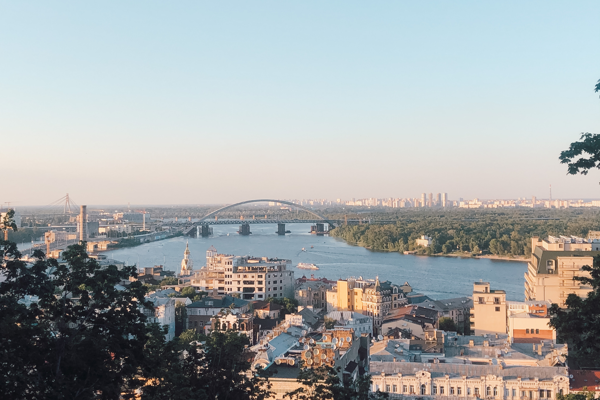
Kyiv (Kiev) Theological Seminary
Kiev, Ukraine
Perhaps the most unexpected place for me to teach has been Kiev, Ukraine. As you are probably aware Ukraine was for decades a part of the Soviet Union. With the fall of the Soviet Union, Ukraine became a separate country. The State-enforced atheism is gone and there is freedom of worship. The Seminary was founded in c.1995 and has had close ties with Biola/Talbot.
I received a request to come to Kiev to teach History of Missions
The plan was to go to Kiev, Ukraine to teach in March and then to Guam in April. Imagine my shock when on Christmas eve as my eight year old granddaughter Emily was dragging me around Target so she could finish her Christmas shopping, that I received a call from the dean of Kiev (Kyiv) Theological Seminary. He was very apologetic. He said, “I’m sorry but I just realized that I gave you the wrong dates for your class. The dates I gave you were for last year. This year the dates are February 8-19. I hope you can still come!” I told him that indeed I would rearrange my schedule to come.
My Assignment? Teach “The History of the Expansion of Christianity.” The time frame was comprehensive: from the Apostolic Age to the twenty-first century.
The students in my class were a mix of Ukrainians and Russians. 80% were male and 80% of the students had missions/church planting as their goal.
During the time I was there the evangelical church in Ukraine was still under re-construction. The church under communism was governed by tradition rather than by the truth of the Bible and was isolated by atheism. During those decades of communist rule the church lost its theological foundation. When I was there they were beginning to realize how crippled and damaged they had become in the communistic wasteland. The students were feeling an urgency to take advantage of the freedom they now have to rebuild. A strong foundation must be built before the church collapses.
During the 2 weeks I was there we spent roughly 6 hours per day in the classroom. But the communication was slow–only a handful spoke English–translation had to be into both Ukrainian as well as Russian. Having said that, the students were involved and eager. We had a translator who spoke both Ukrainian and Russian–that being said, the pace of the class was slow–but the students were attentive and involved.
While the school had a good library–many of the books were in English. While some of the students knew English, the percentage was small. Students who knew English had to help their fellow students by translating for them.
The down side? I was there for two weeks in February. And it was COLD. While I spent my childhood in Maine, I had spent nearly thirty years in California and another 10 in Texas. I was not prepared for the intense cold! On top of that, in the two weeks I was there was only about ½ hour of sunshine. The rest of the time was overcast and very gray!
Besides having a great time in class with the students, on the weekend I had a chance to see some of the sites. Ukraine is historically Eastern Orthodox as opposed to Roman Catholic. As I visited the cathedrals I was stunned by their beauty. One unexpected (jarring?) experience was visiting the Lavra. The Lavra at one of the monasteries is a complex of catacombs in the walls of which are buried untold numbers of people. The Ukrainians walk the nearly ½ mile of the tunnel which is dimly lit. But with just enough light not to trip in the dark and to see the occasionally illuminated glass coffin which contains the remains of one of the Orthodox saints. Strange for me as a Protestant but this is a cultural custom which is centuries old.